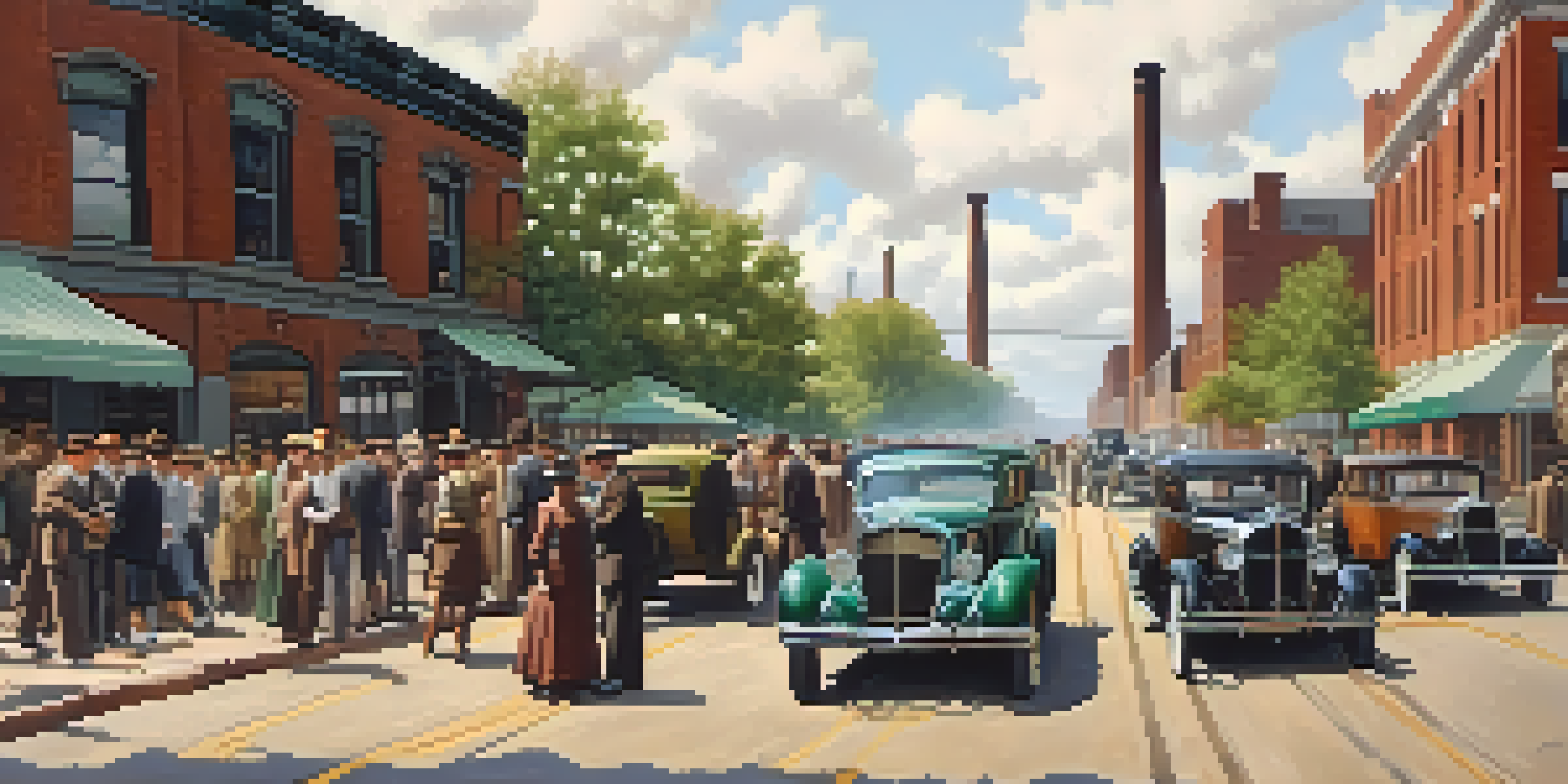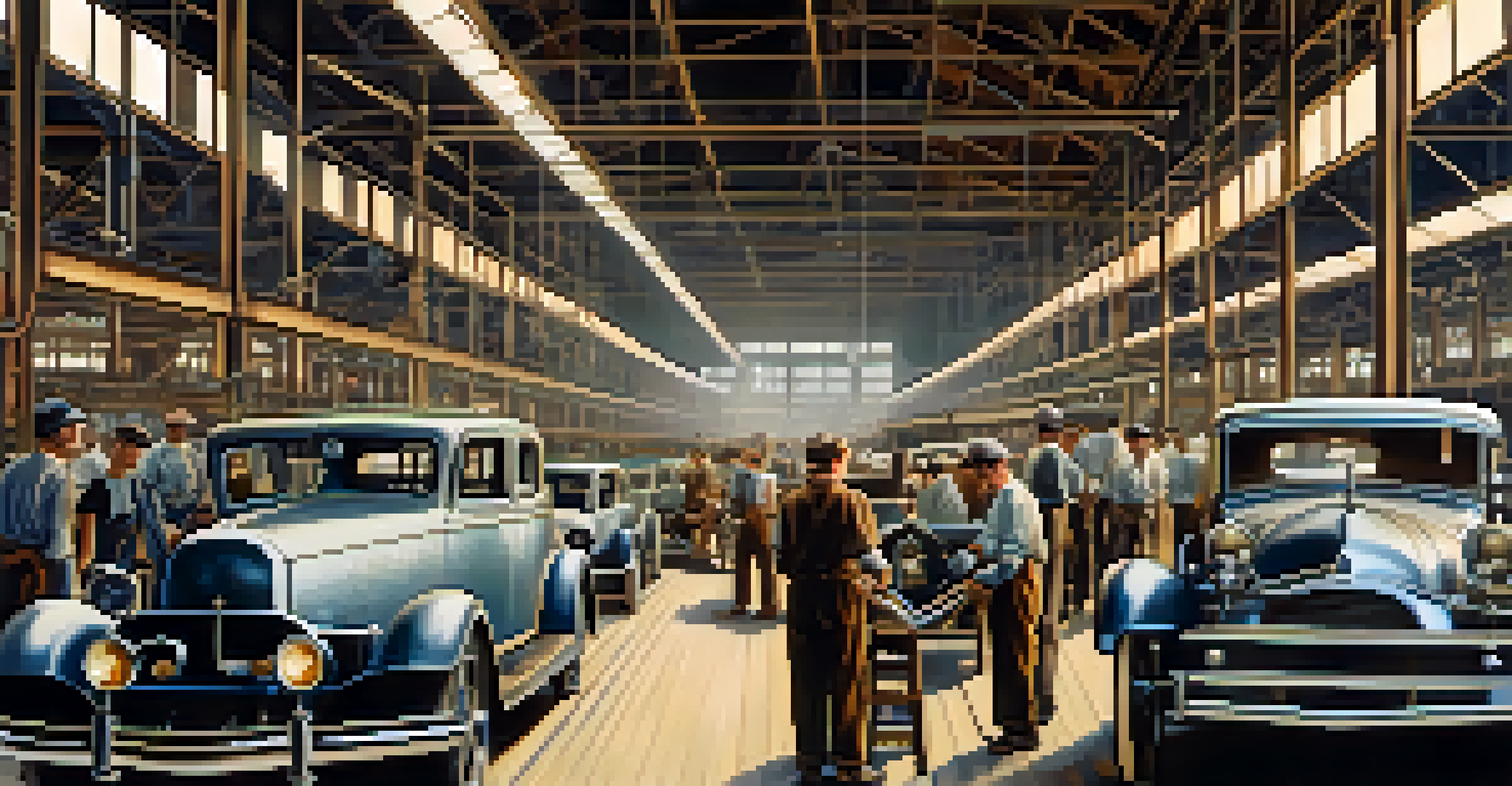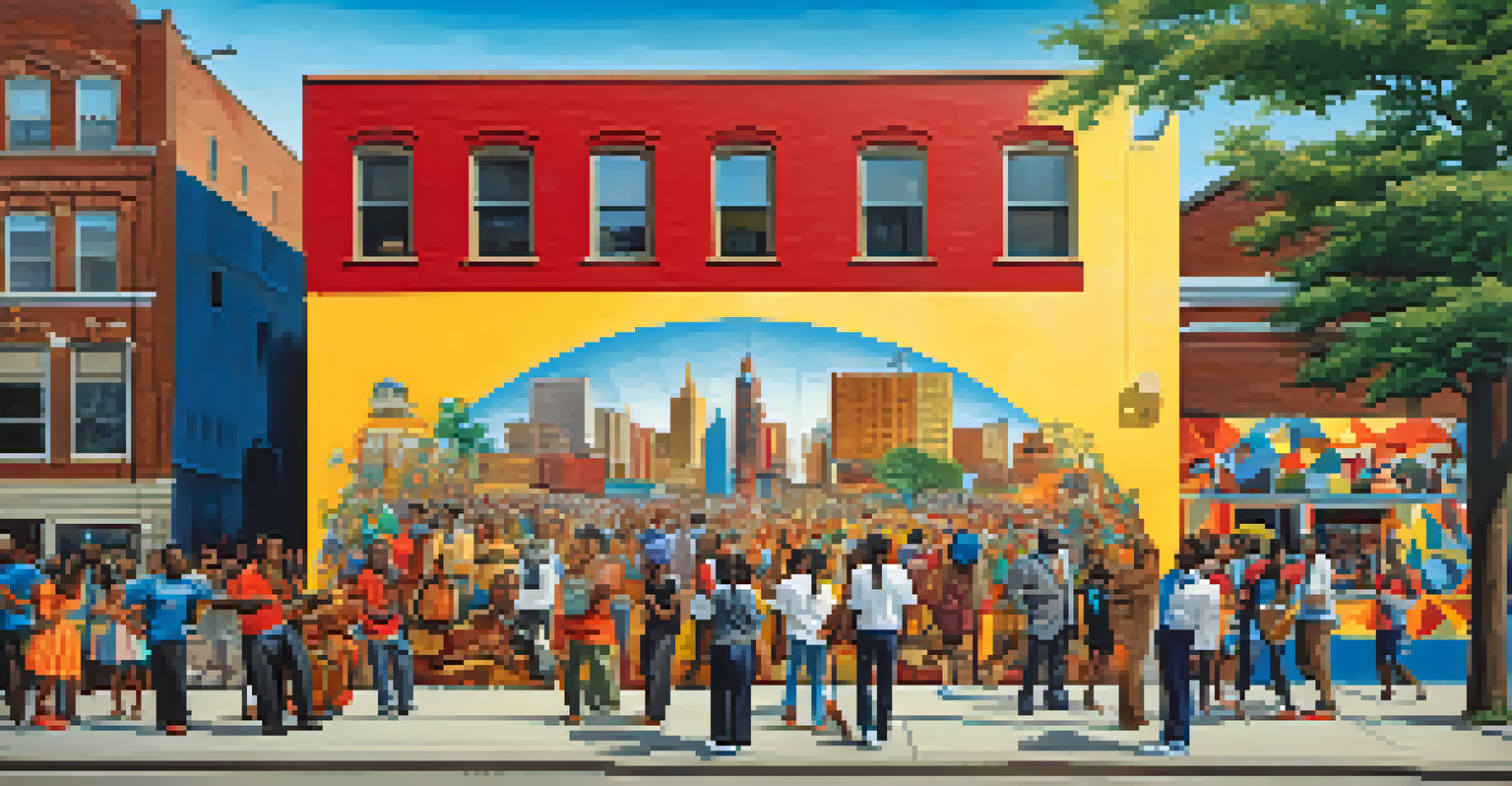Detroit's Industrial Boom: A Catalyst for Change

The Rise of Detroit: From Settlement to Industrial Powerhouse
Detroit's journey began as a humble settlement in the 1700s, evolving into an industrial giant by the early 20th century. The strategic location along the Great Lakes and the Detroit River made it an ideal hub for trade and transportation. As industries flourished, the city attracted workers from various backgrounds, transforming its demographic landscape. This growth set the stage for the city's identity as a manufacturing powerhouse, particularly in the automotive sector.
Detroit is a city that has always been about reinvention, and we are living through another chapter of that story.
The introduction of assembly line production by Henry Ford in 1913 revolutionized the industry, not just in Detroit but across the globe. This innovation drastically increased production efficiency and lowered costs, making cars accessible to the average American. As factories sprang up, so did neighborhoods, schools, and infrastructure, all fed by the booming job market. This period marked the beginning of Detroit's reputation as the 'Motor City.'
However, this rapid industrialization brought challenges, including labor disputes and housing shortages. The influx of workers led to crowded living conditions, which sparked the need for better urban planning. Despite these issues, the industrial boom laid the groundwork for Detroit's economic significance, paving the way for innovations that would define the 20th century.
The Impact of the Auto Industry on Local Economy
The automotive industry became the backbone of Detroit's economy, creating millions of jobs and stimulating growth. Major companies like Ford, General Motors, and Chrysler not only contributed to local employment but also fostered a culture of innovation. As automakers expanded, their suppliers and related businesses flourished, resulting in a robust network of economic activity. This interconnectedness helped solidify Detroit's status as a key player in the global automotive market.

Local businesses thrived alongside the automotive giants, from tire manufacturers to parts suppliers. The vibrancy of Detroit's economy was evident in the bustling downtown area filled with shops, restaurants, and entertainment venues. This synergistic relationship between large corporations and small businesses created a unique economic ecosystem that supported growth and job creation. It was a prime example of how one industry could uplift an entire city.
Detroit's Industrial Transformation
Detroit evolved from a small settlement into a manufacturing powerhouse, particularly known for its automotive industry.
However, dependence on a single industry posed risks, as seen during economic downturns. The cyclical nature of the auto industry meant that when sales dipped, job losses followed. These fluctuations highlighted the importance of diversifying the economy to ensure long-term stability, a lesson that Detroit would come to learn the hard way in later decades.
Labor Movements: Fighting for Workers' Rights
As factories expanded, so did the need for organized labor to advocate for workers' rights. The rise of unions in the early 20th century marked a significant shift in the relationship between labor and management. Workers began to demand fair wages, better working conditions, and reasonable hours, leading to the formation of influential groups like the United Auto Workers (UAW). This movement was crucial in empowering workers and ensuring their voices were heard in a booming economy.
The only way to make a city grow is to make it a great place to live, work, and play.
The labor strikes of the 1930s and 1940s were pivotal moments in shaping Detroit's industrial landscape. These events brought national attention to the struggles of workers and the importance of collective bargaining. Strikes often turned into negotiations that established better pay and improved conditions, setting a precedent for labor rights across the nation. This push for equality not only affected the workers but also transformed the corporate culture within Detroit's industries.
However, the fight for workers' rights was not without its challenges. While unions gained power, they also faced opposition from management and government entities. Despite these struggles, the labor movements of Detroit played a crucial role in shaping the economic and social fabric of the city, leaving a lasting legacy that continues to influence labor relations today.
Cultural Flourishing Amidst Industrial Growth
Detroit's industrial boom not only transformed its economy but also enriched its cultural landscape. As people from diverse backgrounds flocked to the city for jobs, they brought their traditions, art, and music with them. This melting pot of cultures contributed to a vibrant arts scene, including the birth of Motown music, which would resonate far beyond the city limits. The cultural developments during this period reflected the dynamic spirit of Detroit's workforce.
The city's cultural institutions also grew in tandem with its industrial prowess. Museums, theaters, and galleries emerged, showcasing the work of local artists and providing new avenues for expression. The Detroit Institute of Arts, for example, became a beacon of creativity, attracting both locals and visitors. This artistic boom fostered a sense of community pride and identity, helping to define what it meant to be a Detroiter during this transformative time.
Challenges and Resilience
The city's heavy reliance on the auto industry led to economic downturns and urban decay, but community efforts are driving revitalization.
However, the cultural growth was not without its tensions. The rapid changes in demographics and economic status sometimes led to social strife. Yet, these challenges also spurred dialogues about identity, race, and community, ultimately enriching the cultural tapestry of the city. As Detroit navigated the complexities of industrialization, its cultural scene became a testament to resilience and creativity.
Urban Development: Building a New Detroit
With the industrial boom came the need for significant urban development in Detroit. The influx of workers necessitated housing, schools, and infrastructure, prompting city planners to rethink urban design. New neighborhoods sprang up to accommodate the growing population, often characterized by the iconic bungalow-style homes that defined many areas. This development reflected a commitment to creating a livable and functional city for its residents.
Transportation also took center stage during this time, with the expansion of public transit systems to connect workers to factories. Streetcars and buses became essential for commuting, while the development of major highways made travel easier. This investment in infrastructure not only facilitated the daily lives of Detroiters but also supported economic growth by connecting businesses and consumers. The city's layout evolved to meet the demands of its booming industry.
However, rapid urbanization led to challenges such as overcrowding and the strain on public services. As neighborhoods expanded, city planners grappled with issues like sanitation, education, and public safety. These growing pains highlighted the importance of sustainable development practices to ensure that the city's growth benefited all residents. Today, Detroit continues to learn from its past, striving to create a more equitable urban environment.
Challenges in the Post-Industrial Era
As the 20th century progressed, Detroit faced significant challenges that stemmed from its heavy reliance on the auto industry. The oil crises of the 1970s and the economic downturns that followed led to plant closures and mass layoffs. Suddenly, the once-thriving industrial hub found itself grappling with unemployment, poverty, and urban decay. These changes forced the city to confront the realities of a post-industrial economy and rethink its future.
The decline of manufacturing jobs resulted in a population exodus, with many residents seeking opportunities elsewhere. This demographic shift created a sense of abandonment in formerly bustling neighborhoods. The city struggled with dwindling tax revenue, which further hampered efforts to maintain infrastructure and public services. The once-vibrant cultural scene also suffered, as arts and entertainment funding dwindled along with local businesses.
Cultural Growth Amidst Change
The influx of diverse populations during industrial growth enriched Detroit's cultural landscape, giving rise to iconic music and arts.
However, within these challenges lay opportunities for revitalization. Community organizations and local leaders began to advocate for change, focusing on economic diversification and urban renewal. Initiatives aimed at attracting new industries, such as technology and healthcare, emerged, signaling a shift toward a more sustainable economic model. Although the road to recovery has been long, the resilience of Detroit's residents continues to drive efforts for revitalization and renewal.
A New Dawn: Revitalization and Innovation
In recent years, Detroit has experienced a resurgence fueled by innovation and entrepreneurship. The city has become a hub for startups and creative industries, attracting a new generation of business leaders. Initiatives to support small businesses and local entrepreneurs have blossomed, breathing new life into neighborhoods. This focus on innovation reflects a shift away from traditional industries towards a more diverse economic landscape.
Furthermore, the revitalization efforts have also included significant investments in infrastructure and public spaces. Projects like the Detroit Riverwalk and the restoration of historic buildings have transformed the city’s image. These developments not only enhance the quality of life for residents but also attract tourists and new residents alike. The revitalization of Detroit is more than just economic; it’s about reclaiming the city's identity and pride.

As Detroit continues to evolve, it faces the challenge of balancing growth with inclusivity. Ensuring that all residents benefit from the city’s revitalization is crucial for sustainable development. Community leaders are working together to create equitable opportunities that honor the city’s rich history while paving the way for a brighter future. Detroit's journey is a testament to resilience and the power of innovation in the face of adversity.